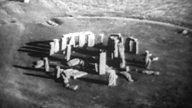 |
| Sunset over Stonehenge, England, a mysterious ring of rocks (MPanchenko/livescience.com) |
.
Welsh Stonehenge quarries identified in Pembrokeshire
Abigail Neal (BBC.com, Dec. 7, 2015)
 |
| Main Street, Pembroke as seen from the castle (W). |
 |
| Mowing the Salisbury Plain lawn (The Guardian). |
.
Never quarried?
There is "no
evidence" some of the stones at Stonehenge that came from two
Pembrokeshire quarries were excavated by humans, a geologist has said.






















































































































































































































































No comments:
Post a Comment